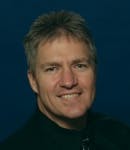The story of Nikola Tesla — Waverunner — Part 4
Even the ac motor was a wireless, wave-powered device from Tesla's perspective.
Now you may not pick up on this if your frame of reference is the copper or steel. You have to look at the airgap, where Tesla fixed his gaze. It is here, between the stator and rotor, where ac motors work. And it is here where Tesla outwitted his professors and the engineering establishment of his day.
Perhaps Tesla regarded all distances and spaces merely as “airgaps,” conducting media joining (not separating) the energy sources he devised and the receptors they were meant to influence.
Before his lab burned down in 1895, Tesla was preparing to send radio signals across a 50-mile gap to a spot in West Point, N.Y. He had already demonstrated, and later patented, low-power radio, and was building a coil of sufficient size to transmit RF energy over the longer distance. Tesla confidently claimed that voice and image signals would one day fill the air, and in 1898, he wowed a Madison Square Garden audience by transmitting wireless control signals to the world's first RC device, a “tele-automatic” boat.
A year later, Tesla moved to Colorado Springs and built a new laboratory along with a gigantic Tesla coil, aiming to scale up his work. He soon discovered that at the higher power he could transmit energy waves into the Earth and, at the right frequency, they'd reflect back to the surface. Tesla considered this — the formation of “terrestrial stationary waves” under tuned resonant conditions — his most important finding.
With his new circuit component of planetary dimensions, Tesla attempted an experiment at a scale still unmatched today. In essence, he used the Earth as an amplifier. To each cycle of the terrestrial wave, he added more energy, eventually creating a 130-foot lightning bolt, the largest man-made arc ever recorded. Local residents reported hearing thunder 22 miles away, and seeing a strange blue glow (like St. Elmo's Fire) hanging over the meadow where Tesla conducted his work. After his triumph in Colorado, Tesla moved back to New York and wrote a sensational piece that appeared in the June 1900 issue of Century Magazine. Tesla described a future filled with technological marvels and wonders. He predicted that humans would control the weather by manipulating electromagnetic fields and that we'd tap the Sun's energy with Earth-based antennas.
Tesla's vision captured the imagination of many, including financier J. P. Morgan. Ever the speculator, Morgan put up the money to build a communication tower that would send signals around the world. Tesla selected a site in Wardenclyffe, Long Island, and immediately began building a 200-kW transmitter.
The tower rose quickly, eventually reaching a height of 187 feet. An ominous-looking mass, a 55-ton steel sphere, balanced precariously on top. The design also included a 120-foot subterranean shaft anchored with 16 iron pipes descending another 300 feet. Besides adding structural stability, the pipes provided electrical contact with the Earth. “In this system,” Tesla explained, “it is necessary for the machine to get a grip of the Earth; otherwise it cannot shake the Earth.”
Despite the fast start, the project hit some snags. Then, on December 12, 1901, Guglielmo Marconi signaled the letter “S” wirelessly from England to Canada. Tesla was unfazed by the news, pointing out that Marconi used 17 of his patents to transmit a single letter, but Morgan was beginning to doubt. Marconi's system not only worked, it was also inexpensive.
Morgan continued to support the project until 1903, stopping when he found out that the actual intent of the tower was wireless power transmission. Tesla wanted to deliver free power to the entire world, believing he could do so by converting the Sun's electromagnetic energy to a high-frequency field. Morgan didn't share the vision, however, and declined all further requests for additional funding. If that wasn't bad enough, the stock market crashed, doubling the price of construction materials needed to finish the project.
The next two years brought even more hardship. In 1904, the U.S. Patent office stripped Tesla of his radio patent and awarded it to Marconi instead. Losing the patent was devastating. With nothing to barter with, Tesla lost all prospects of attracting additional support. His money soon ran out and, in 1905, the Wardenclyffe project came to a halt. The tower was eventually knocked down, in many ways, taking its creator with it. The newspapers called the demise, “Tesla's million dollar folly.”
Humiliated and defeated, Tesla experienced a complete nervous breakdown.
That's where we pick up the great inventor's story in the next installment ...
About the Author
Larry Berardinis
For more than two decades, Lawrence (Larry) Berardinis served on Machine Design and Motion System Design magazines as an editor and later as an associate publisher and new-business development manager. He's a member of Eta Kappa Nu, and holds an M.S. in Solid State Electronics. Today, he is the Senior Manager of Content Programs at ASM International, formerly known as the American Society for Metals.

